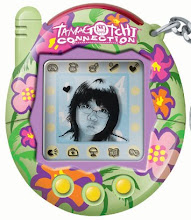2-D Design
Team Yellow
November 30, 2009
The portion on the electromagnetic spectrum that we can detect with our eyes is called "visible light" or just "light." The electromagnetic spectrum is composed of electromagnetic radiation that takes the form of wavelengths. The normal human eye can see a wavelength range of around 400-700 nanometers (nm), which encompasses the colors violet to red. These colors are actually wavelengths of different size, from violet being the shortest to red the longest. The wavelengths that humans can detect also have frequencies between 790-400 terahertz.
http://i7.photobucket.com/albums/y267/ToraMe/Yellow/wavelength_figure.jpg
In the visible spectrum, the color yellow has a wavelength of 570-590 nm and a frequency of 508-526 THz. This places it in the middle between violet and red, and nearly in the center of the visible spectrum. Here’s what it would look like if you were comparing the speeds.
Red http://i7.photobucket.com/albums/y267/ToraMe/Yellow/Red-wave.gif
Yellow http://i7.photobucket.com/albums/y267/ToraMe/Yellow/Yellow-wave.gif
Violet http://i7.photobucket.com/albums/y267/ToraMe/Yellow/Violet-wave.gif
There are some colors that cannot be seen on the visible spectrum, such as the color magenta. These colors can only be seen when two different wavelengths hit the same spot on the retina of the eye at the same time. The color yellow does appear on that spectrum, which means that the eye can perceive the color with only a single wavelength of light. An interesting fact, however, is that when using additive color through light, yellow can also be perceived when red and green light is shining on a screen, with no true yellow wavelengths included. This is because the electrical signal sent to the brain by the combination of two wavelength of red and green is very similar to the signal sent to the brain when the eye picks up one wavelength of yellow. This is because the single wavelength for yellow is between the wavelengths for red and green on the visible spectrum, which makes both the red and green cones in your eyes fire nerve impulses. Essentially, the wavelength for yellow stimulates the same nerves the combination of wavelengths from red and green does.
http://www.ladyada.net/learn/proj1/AdditiveColorMixing.png
http://i7.photobucket.com/albums/y267/ToraMe/Yellow/dualwavelengths.jpg
In the real world, yellow wavelengths can be found in the low-pressure sodium vapor lamps used in some parking lots. They emit a yellow light with a wavelength of 589 nm.
http://www.kslights.com/img/why-kingsun-led/250W-Sodium-Lamp.jpg
Another random fact is that yellow wavelengths are also believed to be connected to the solar plexus or navel in chakra mediation.
http://i7.photobucket.com/albums/y267/ToraMe/Yellow/chakracolors.jpg
http://i7.photobucket.com/albums/y267/ToraMe/Yellow/YellowPower.jpg
Works Cited:
http://eosweb.larc.nasa.gov/EDDOCS/Wavelengths_for_Colors.html#violet
http://en.wikipedia.org/wiki/Visible_spectrum#Spectral_colors
http://www.exo.net/~pauld/summer_institute/summer_day6color/color_algebra.html

No comments:
Post a Comment